Purple Flowers: [List, Examples, Characteristics and Care]
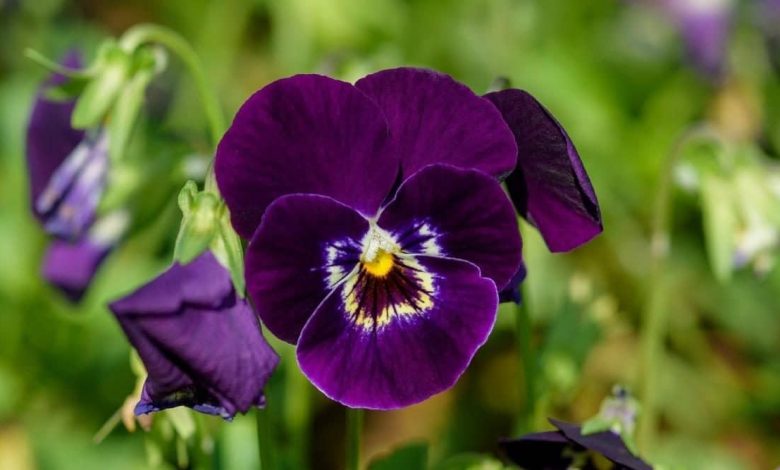
Purple flowers could be presented as the most impressive of the entire chromatic circle due to the visual effect they produce.
In addition to being a clear message of elegance, they are also associated with a certain level of peace and tranquility.
They are very striking to enjoy in the garden and their characteristics can be used to make incredible flower arrangements.
Do you want to join us to discover which are the most beautiful purple flowers for your garden?
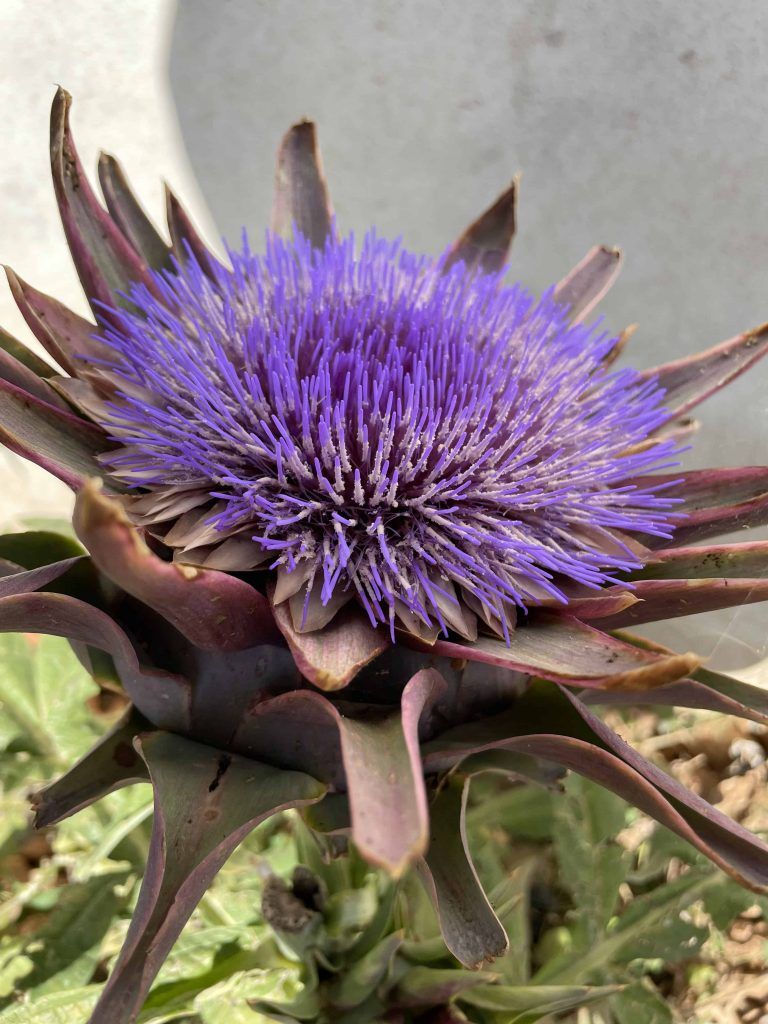
petunias

Petunias are one of the main representatives of purple flowers, although there are also varieties of other colors.
These have the characteristic trumpet flower shape that opens into beautiful petals that are lighter than the purple that is outlined inside.
They are flowers that can prevail for a long time and that occur in large numbers, dressing the environment with their vivid purple color.
Equally noteworthy is the fact that they come from a plant that is resistant to temperature changes.
lilies

Who doesn’t love seeing a lily in its luscious, pungent purple? These are very beautiful flowers to look at, especially because of the grouping they make.
And it is that unlike other species that make it look like a bouquet when joined, in this case it is a kind of fan.
The most common thing to find purple lilies is that they have a yellow and white center, which makes them stand out much more.
Lilies can also be found in other beautiful colors such as white or red, but purple is undoubtedly the favorite of almost everyone.
foxgloves
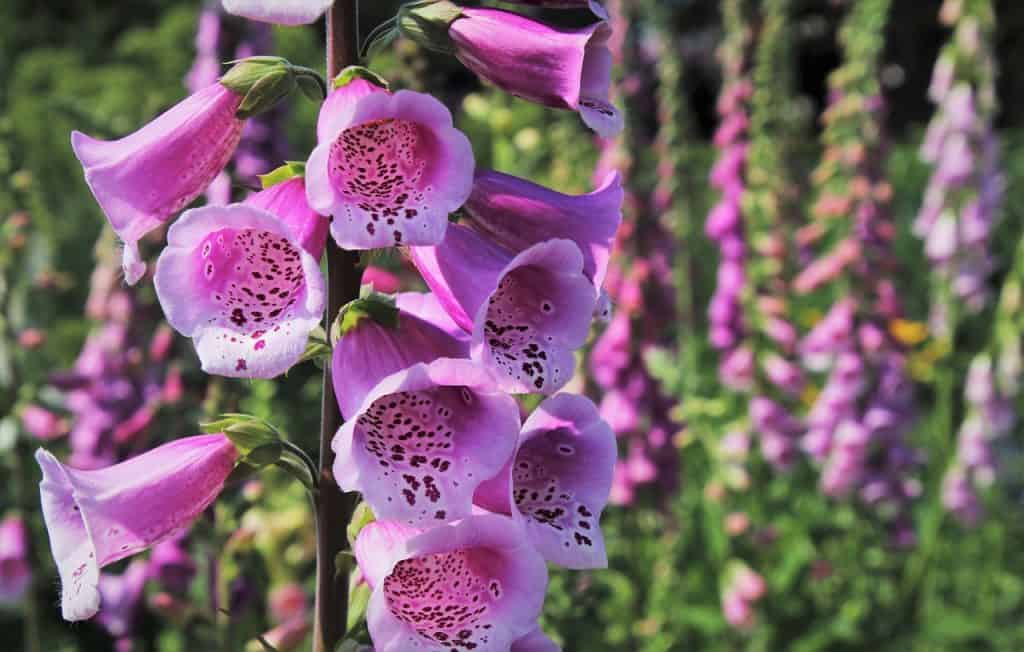
It is a very striking species that develops better in temperate climates and does not like too much exposure to the sun.
The trumpet-shaped flower structure develops in a light purple color on the outside and darker flecks towards the inside.
Another interesting detail is that they give off a rich smell, which can be very pleasant in areas near the house since it is not a very tall plant.
However, it is necessary to consider that it blooms every two years.
artichokes

Surprised?
Yes, artichokes are not only a rich, nutritious and beneficial food for health. Also, when they flower, they give us an intense violet/purple color that is really spectacular.
In addition, it is a plant that generally requires little care. Although you must be careful about the aphid, which usually has preference in attacking it.
roses
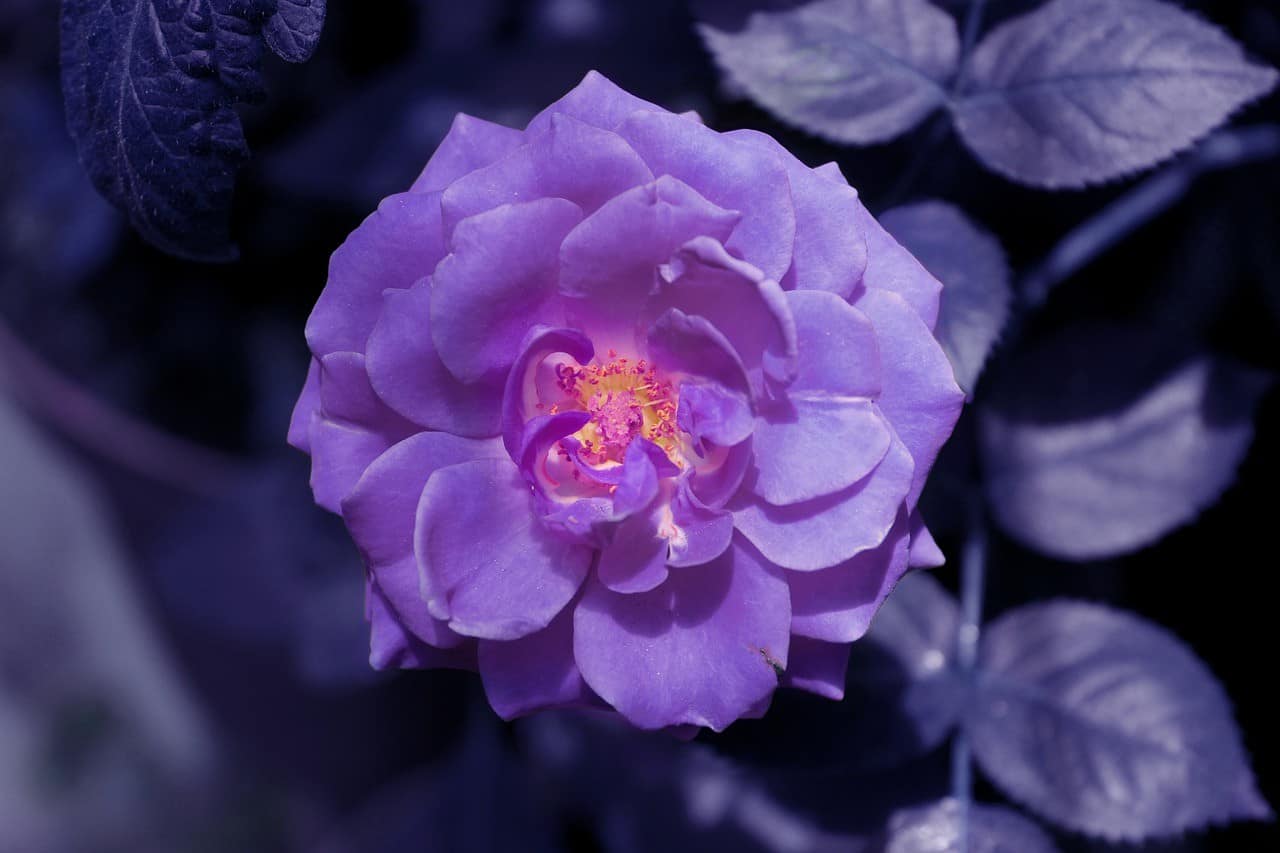
Who doesn’t like roses? Whatever color they are, roses play a leading role as one of the most famous species in the world.
In this case, purple roses are obtained from a small bush that can be placed directly in the garden or in a pot.
Just as it is its shape full of overlapping petals that are so pleasing to the eye, it happens with the delicious smell that it gives off.
Dimoforteca

For those who love flowers with well-defined petals that develop from a center, the dimoforteca should be one of their favorites.
This purple flower develops an acceptable size to enjoy its beauty in detail, which has earned it a place of honor in many gardens.
Como características específicas de siembra es importante mencionar que es una flor a la que le gustan más los climas templados.
Pero además, es un ejemplar que vale mucho la pena si lo que buscamos es tener flores moradas pronto, porque crecen con mucha rapidez.
Lavanda

Es unaplanta muy resistenteyque requiere de mucha luz, aunque en invierno soporta bien las heladas.
- Quizás te puede interesar: 25 Plantas muy resistentes para el exterior.
Se adapta sin problemas a zonas pedregosas y a terrenos secos y arcillosos, así como a macetas y jardineras.
Además, no requiere de muchos riegos.La lavandase adapta muy bien a la falta de humedad en el suelo gracias a su profundosistema radicular.
Azafrán

Conocido como el oro de la mancha, el azafrán que es una de las flores moradas más destacadas.
Aunque se trata de una flor ni muy grande ni muy pequeña, el contraste que consigue entre la estructura morada y los pistilos anaranjados es algo difícil de repetir.
Es muy utilizada en decoración por los aspectos antes mencionados y también representa una compañía ornamental muy bien valorada.
Se trata de una de las especies que florecen en primavera y lo hacen de manera autónoma, sin apoyo de fertilizantes.
Iris germánica o Lirio azul

LaIris germánica oLirioazul, es una planta herbácea de altísima resistencia que pertenece a la familia de lasIridáceas.
Es una especie típica de Europa central. También se le conoce con los nombres de lirio común, lirio cárdeno, lirio morado, lirio azul o lirio pascual.
¿Cuándo la cultivamos? Debe hacerse a final de la primavera y comienzos del otoño.
No demanda una tierra muy especial. Se conforme con suelos fértiles, bien drenados y dephneutro.
También podemos considerarla como unaplanta ornamental.
Anémona (Anemone nemorosa)
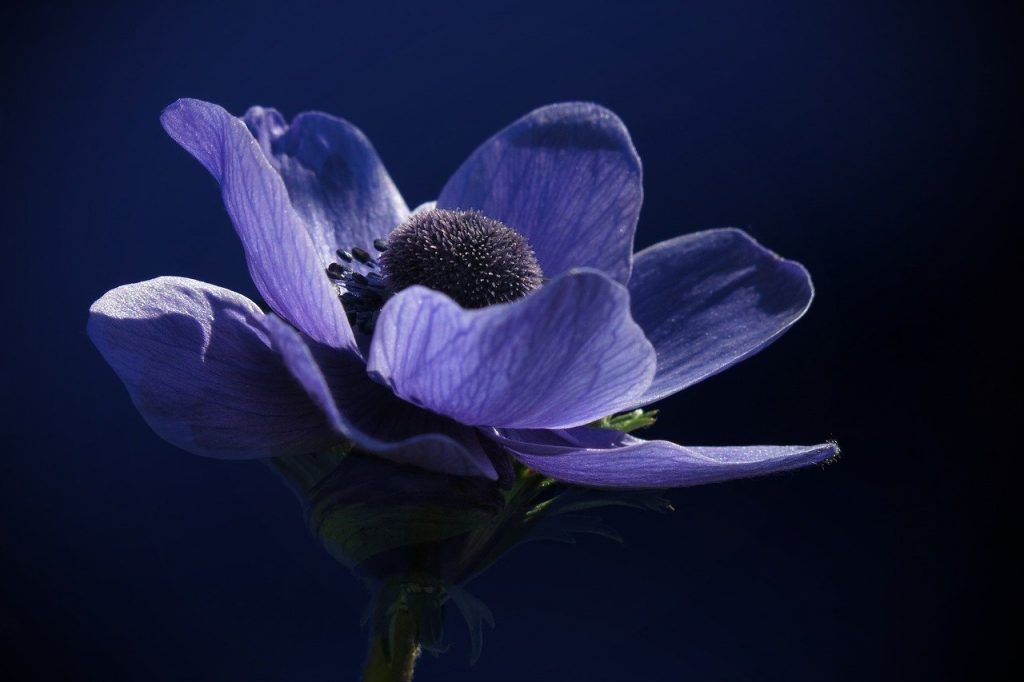
La anémona es una especie diversa que se presenta en muchos colores y variedades que florecen en primavera y otras que lo hacen en otoño. También pueden ser plantas de bajo crecimiento que prefieren los bosques y jardines de rocas o de alto crecimiento que prosperan a finales del verano.
- Necesidades de suelo: Húmedo, bien drenado.
- Necesidades de luz solar: Sombra parcial.
- Zonas de cultivo: 3 – 9.
- Consejo sobre las flores: Trasplanta sólo en primavera. Las anémonas pueden ser lentas en su crecimiento, pero una vez establecidas es probable que se extiendan.
Orquídea abeja (Ophrys apifera)
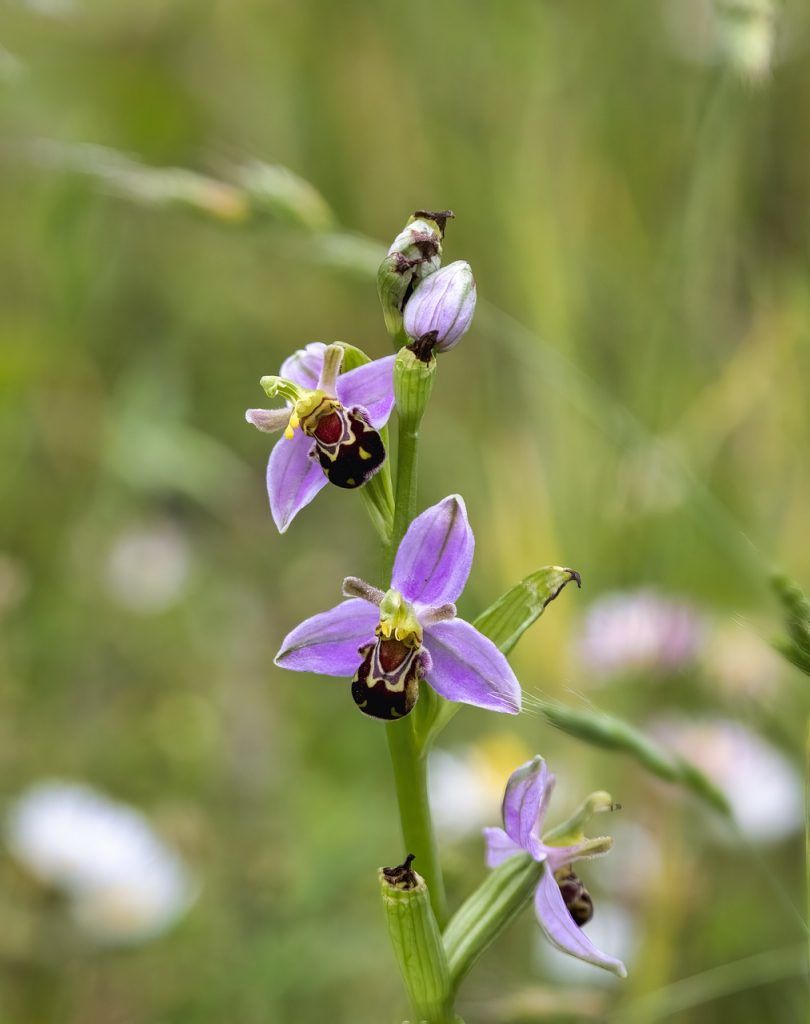
Llamadas así por su forma de abeja, estas orquídeas atraen a las abejas macho que ayudan a polinizar las flores. La orquídea se presenta en muchas combinaciones de colores diferentes.
Los tres pétalos exteriores van del blanco al púrpura y el labio central puede ser de un color sólido, rayado o incluso punteado.
- Necesidades de suelo: Húmedo, bien drenado.
- Necesidades de luz solar: Pleno sol/sombra parcial.
- Zonas de cultivo: 6 – 9.
- Consejo sobre las flores: Las Orquídeas Abejas son difíciles de cultivar en el exterior. Plántala en una maceta y disfruta de ella dentro de tu casa.
Nocturna agridulce (Solanum dulcamara)
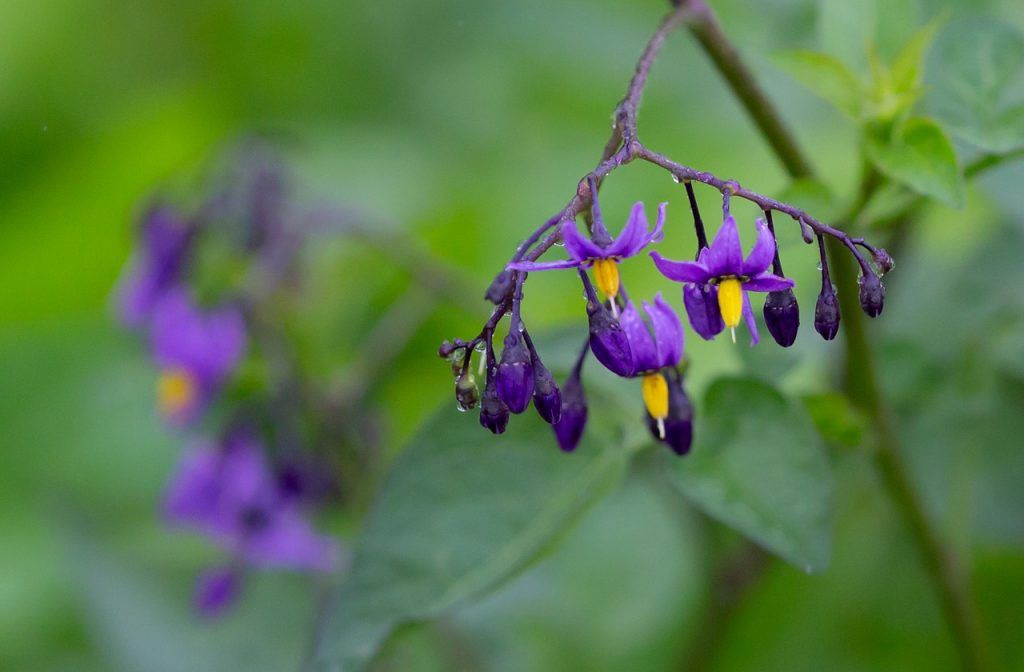
- Necesidades de suelo: Suelo bien drenado.
- Necesidades de luz solar: Sombra parcial.
- Zonas de cultivo: 4 – 8.
- Consejo sobre las flores: La Sombra Nocturna Agridulce no es lo mismo que la Sombra Nocturna Mortal (o Belladona), pero puede causar la muerte de diversos mamíferos. Esta enredadera crece muy rápido y puede invadir rápidamente los hábitats húmedos.
Añil silvestre (Baptisia australis)
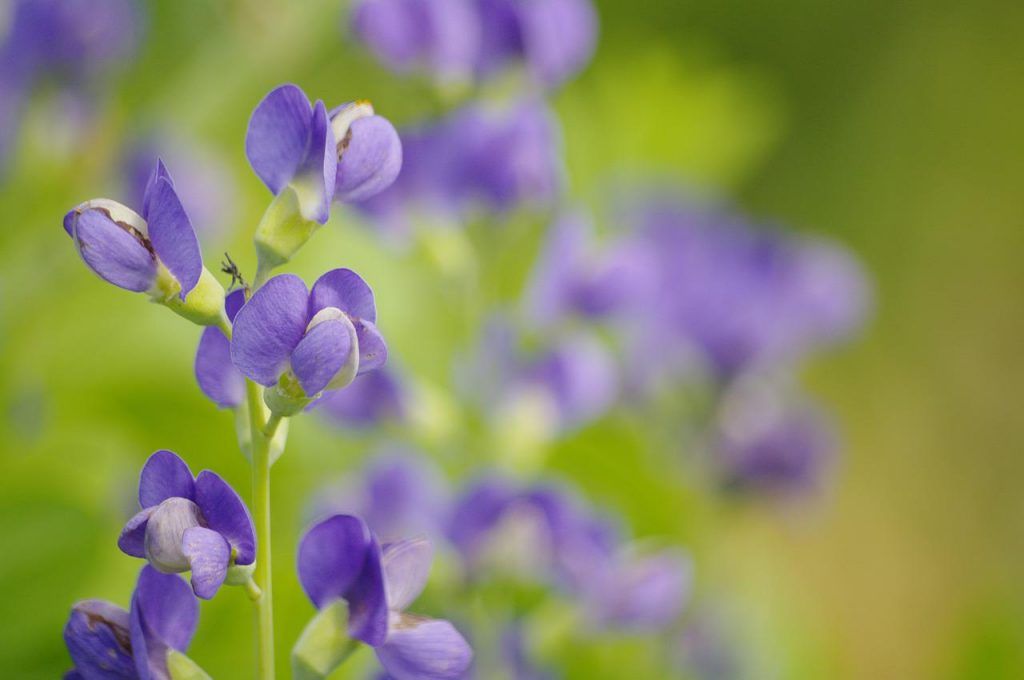
Miembro de la familia de los guisantes, las flores del añil silvestre, parecidas a las del lupino, son ideales para cortar y pueden crecer hasta 1,2 m de altura. Se mantendrán sanas durante todo el verano y proporcionarán un gran telón de fondo para los lirios que florecen más tarde.
- Necesidades de suelo: Bien drenado.
- Necesidades de luz solar: Pleno sol.
- Zonas de cultivo: 3 – 10.
- Consejo sobre las flores: Una vez establecido, el añil silvestre es vigoroso, tolerante a la sequía y requiere muy poco mantenimiento. Deja las flores hasta que se desarrollen las vainas de las semillas y luego recórtalas un tercio.
Campanilla (Campanula)
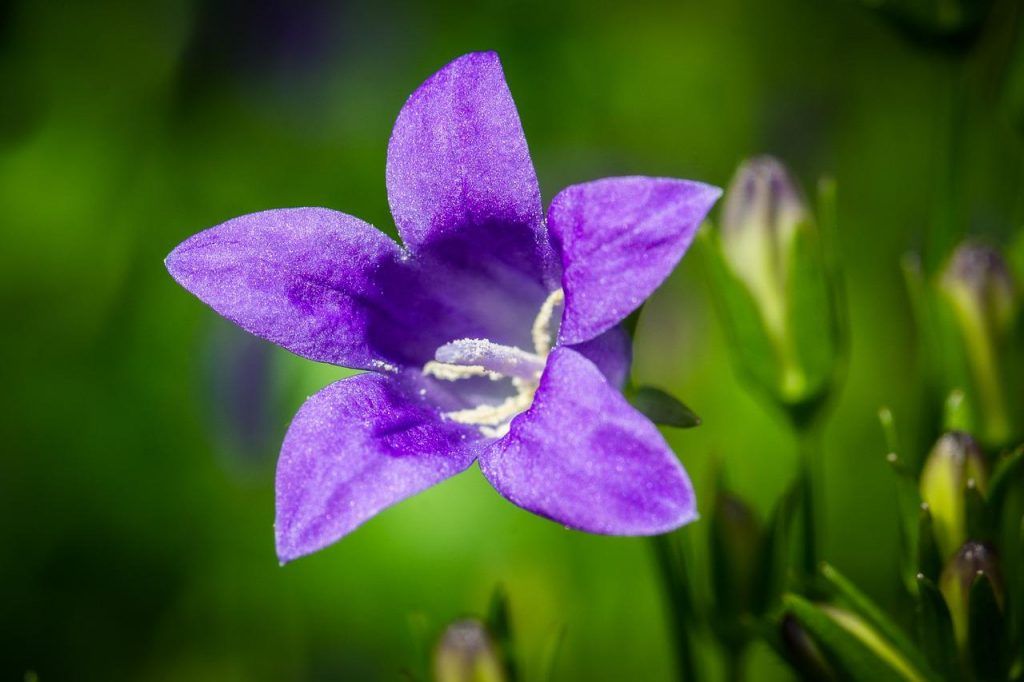
Estas encantadoras florecillas son flores volteadas en forma de copa que varían en tonos desde el blanco hasta el lavanda. La campanula es una excelente planta tapizante y prosperará en tu jardín de rocas.
- Necesidades de suelo: Bien drenado.
- Necesidades de luz solar: Pleno sol/sombra parcial.
- Zonas de cultivo: 3 – 9.
- Flower Tip: Cut them off at the end of watering to help rejuvenate the plant for spring.
Dwarf Iris (Iris Reticulata)
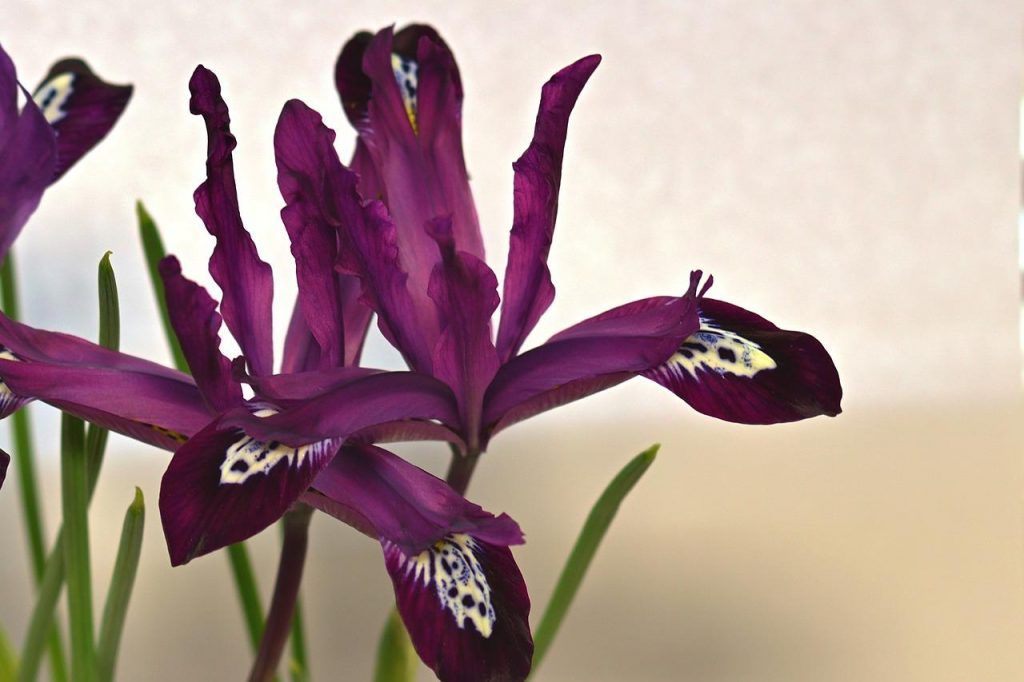
Dwarf lilies are the smaller versions of the well-known slender beauties. They bloom early and unfurl with rich, dark petals.
- Soil Needs: Well drained.
- Sunlight Needs: Full sun.
- Growing Zones: 4 – 9.
- Flower Tip: Emerge these bulbs between late water and early spring for best results.
Globe flower (Platycodon)
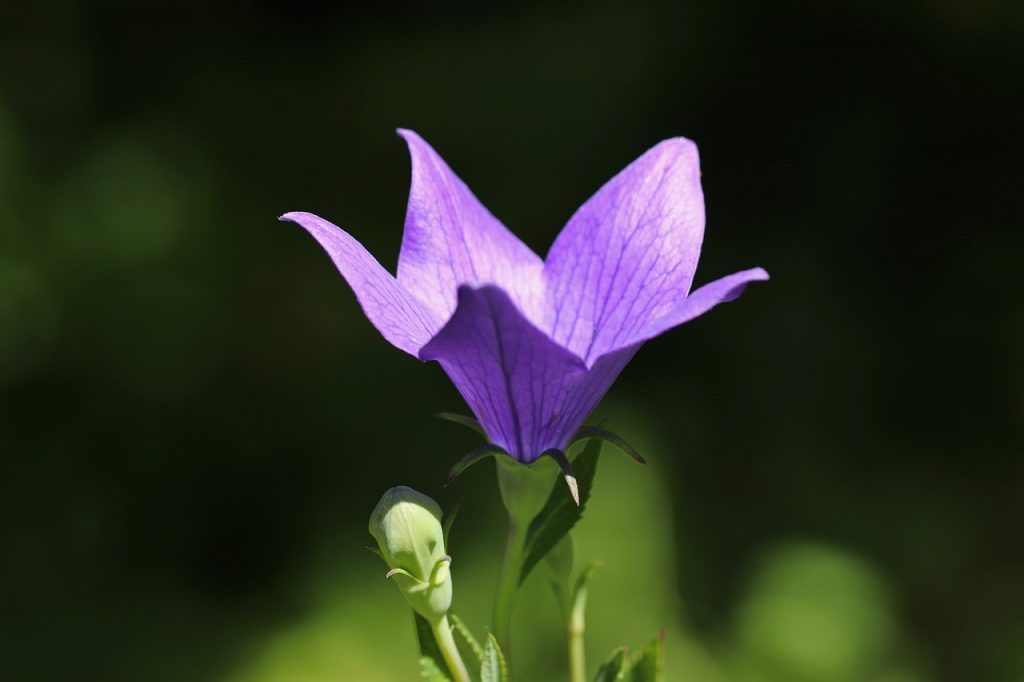
The Globe Flower gets its name from the shape it takes before it blooms. The hollow, globe-like flowers open up into five-pointed flowers.
- Soil Needs: Well drained.
- Sunlight Needs: Full sun/part shade.
- Growing Zones: 3 – 9.
- Flower Tip: Choose Astra Blue or Fuji Blue if you’re looking for a pale purple color.
Catnip (Nepeta)
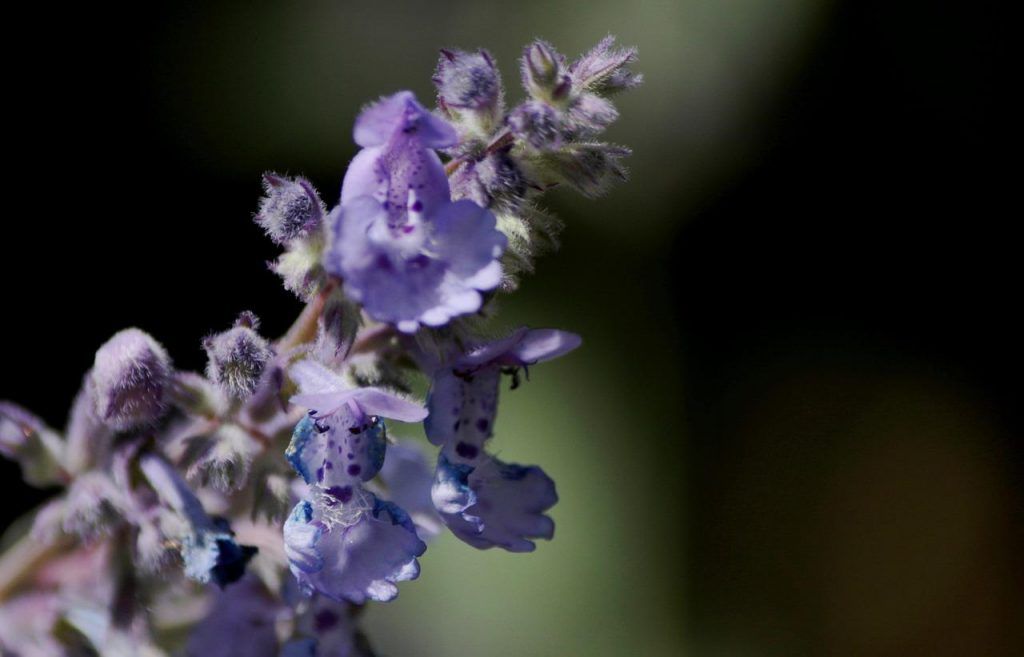
These long silvery flower spikes are not only easy to grow, they provide a long blooming season. Catnip makes a great summer cut flower.
- Soil Needs: Well drained.
- Sunlight Needs: Full sun.
- Growing zones: 3 – 8.
- Flower Tip: Many hybrid species are sterile and will not go to seed.
Sage
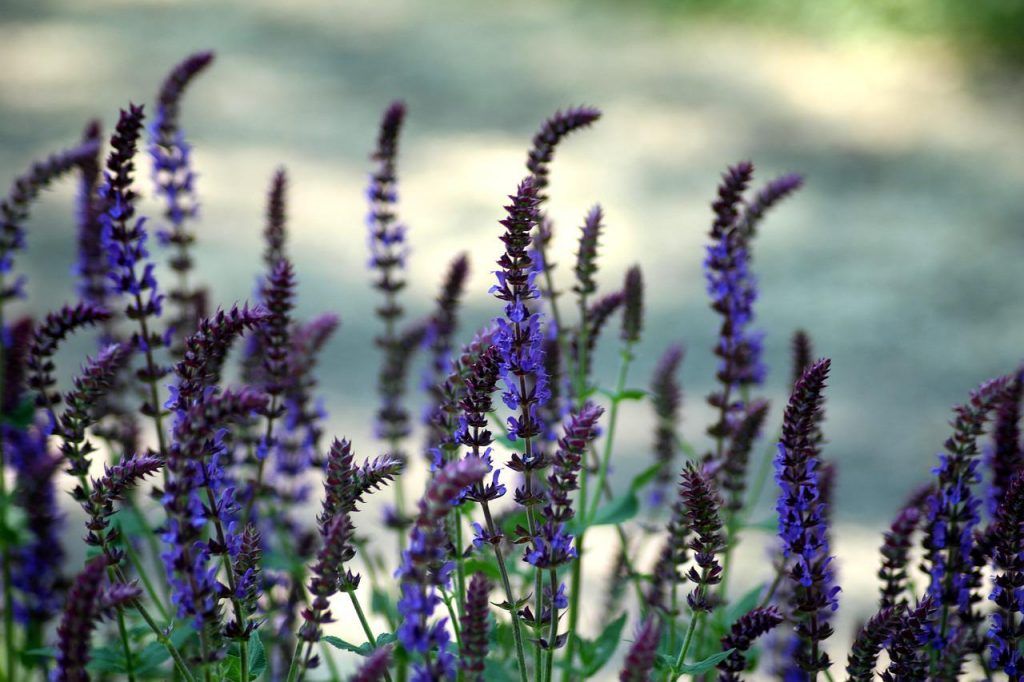
Salvia can grow 20 to 30 inches tall. Along its stem, it is full of small tubular plumes of spectacular purple tones.
- Soil Needs: Well-drained soil.
- Sunlight Needs: Full sun/part shade.
- Growing Zones: 4 – 9.
- Flower Tip: Although partial to full sun, this plant can also do well in shade in hot weather.
purple flower care
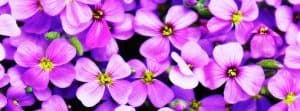 There are more resistant purple flowers and others that are usually very delicate. Hence, it is essential to assess the particular care of each species.
There are more resistant purple flowers and others that are usually very delicate. Hence, it is essential to assess the particular care of each species.
The most common is that they need a good amount of sunlight to flourish and show their color with greater strength and brightness.
Irrigation is important in most species, especially in the summer months, so good planning must be established for this.
There are some pests that can affect purple flowers, such as aphids, so it will be necessary to be vigilant and work with insecticides if necessary.
Finally, fertilizations should be done at the beginning of flowering to ensure the best characteristics: shape, size and color.
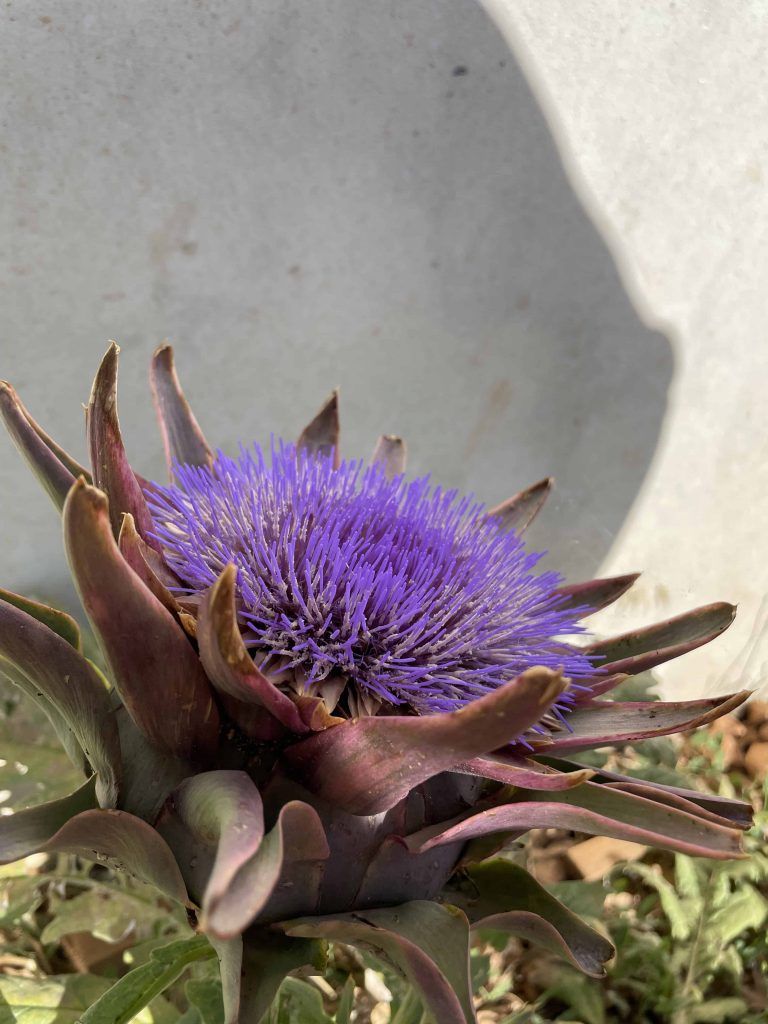
Characteristics of this type of flowers
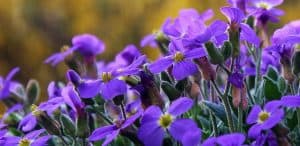 Purple flowers are highly valued at certain times, but in reality they are not the most commercial.
Purple flowers are highly valued at certain times, but in reality they are not the most commercial.
Most people use them to make compositions within their own gardens because of the visual impact they generate.
In addition, if we take into account that there are very striking versions in terms of their shapes, the reasons for preferring them increase much more.
Meaning of purple flowers
For social use, purple flowers are often used to demonstrate balance and tranquility in established love relationships.
- For this reason, they are frequent in the organization of weddings, where the varieties of tonalities make them an endearing guest.
- The tranquility they generate can be extrapolated to personal health conditions, allowing the patient to find calm.
- It is also common for purple flowers to be used in the workplace because they are synonymous with respect and trust.
- Around friendship relationships, it is an invaluable support when a loved one is going through a difficult time.
- But we must not lose sight of the fact that the level of darkness or lightness also plays a leading role. And it is that dark purple flowers can be seen as a symbol of strength.
Purple flowers are striking, beautiful and an ideal addition to any garden.
Do you dare with some of them?

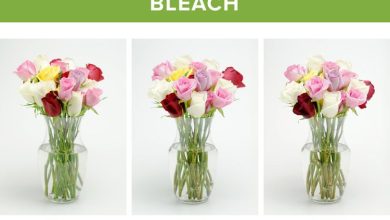

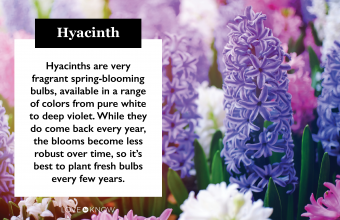
![Photo of Violet Flowers: [Examples, Care, Characteristics and Meaning]](https://www.complete-gardening.com/wp-content/uploads/2022/08/violet-flowers-examples-care-characteristics-and-meaning-390x220.png)